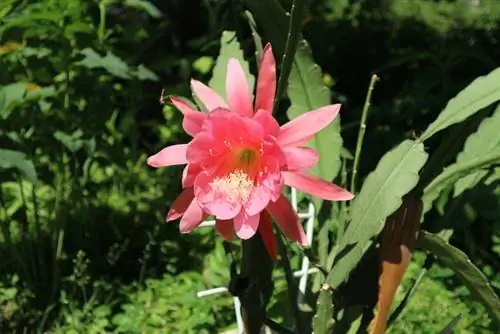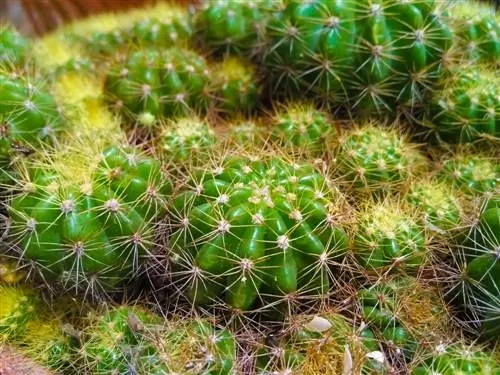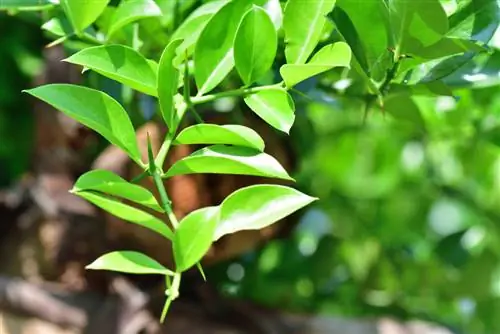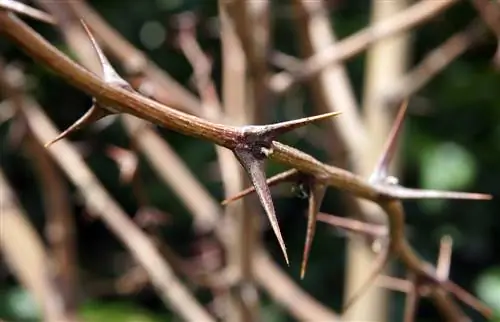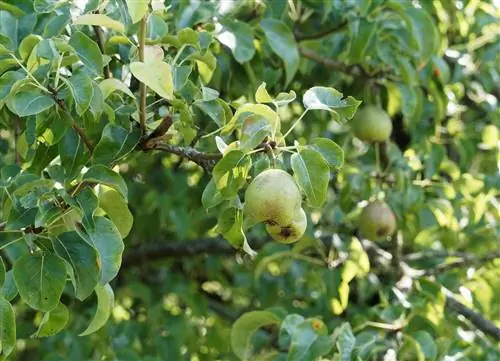- Author admin [email protected].
- Public 2023-12-16 16:46.
- Last modified 2025-01-23 11:22.
The blackberry bush protects its berries well. If you want to get to the delicious black fruits, you have to be careful of the countless, very sharp spines. Otherwise, your clothes will be torn or your hand will be slashed in no time. A close-up look at this stinging challenge.
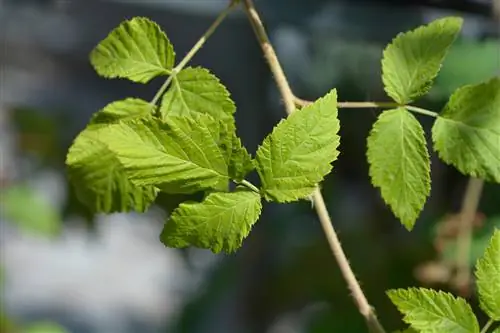
Are there blackberries without painful thorns?
There are nowmany breedsavailable without spines. These includeclimbingandupright growing varieties, each with different fruit characteristics and ripening times. It is best to care for berry bushes with thorns that have already been planted with thick gloves. Regular cutting and tying makes harvesting easier.
Which blackberry varieties are thornless?
Here is a selection of the best known and most popular blackberries (Rubus sect. Rubus) without thorns:
‘Asterina’
- Growth: medium strong, robust
- Fruit: large, firm and very sweet
- Harvest time: July to October; regular, above-average yield
- Other: is aromatic-sweet even before it is fully ripe
‘Black Satin’
- Growth: upright
- Fruit: shiny black, moderate tasting
- Harvest time: early August to mid-October, rich in crops
- Other: susceptible to frost and disease
‘Chester Thornless’
- Growth: vigorous, climbing, bushy
- Fruit: big, good taste
- Harvest time: from August until the first frost
- Other: beautiful flowers
‘Jumbo’
- Growth: vigorous
- Fruit: large, soft, not particularly good taste
- Harvest time: August and September; very profitable
- Other: Berries are well suited for further processing; Conditionally hardy
‘Loch Ness’
- Growth: medium strong, semi-upright
- Fruit: large, firm, aromatic-sweet
- Harvest time: beginning of July to end of August, very rich yield
- Other: also known as 'Nessy'; susceptible to downy mildew
‘Loch Tay’
- Growth: upright
- Fruit: a bit small, good taste
- Harvest time: July and August
- Other: Fruit tastes best fresh
‘Navaho’
- Growth: strongly upright, long rods, robust
- Fruit: large, shiny and very aromatic
- Harvest time: end of July to end of September
- Other: blooms beautifully pink
‘Thornfree’
- Growth: strong growth
- Fruit: large, juicy, slightly sour
- Harvest time: mid-August to end of September
- Other: sensitive to vine disease and frost
‘Thornless Evergreen’
- Growth: medium strong, upright
- Fruit: medium-sized, firm, sweet-sour-aromatic
- Harvest time: end of August to mid-October
- Other: susceptible to blackberry rust, is also called 'Blacky' or 'Domino' by gardeners
Do blackberries actually have spines or thorns?
Both terms are used for blackberries in everyday life. Botanically correct blackberries havePrickles.
Can I remove the spines from blackberries?
Blackberries have somany spinesthat it isimpossible to remove them completely, quickly and painlessly. Make harvesting easier by tying your blackberries to a trellis and planting them out every summer. In addition, you should always only leave the 4-6 strongest rods and remove the others.
Why are prickly blackberries difficult to compost?
You should generally not compost cut blackberry vines as they can easily take root even in compost. Since it is also very rich in nutrients, they will overgrow everything in no time. Smart gardeners therefore chop up the vines. But it turned out that the hard, sharp spines decomposed only with difficulty and can later be foundalmost intact in the compost. Anyone who likes to dig in the earth without gloves will experience a prickly miracle.
Tip
Blackberries also grow in pots and raised beds
Thornless, upright blackberry varieties do not have to be in the bed. With minimal more care, you can also grow them in raised beds. Even a large pot with a diameter of more than 25 cm is sufficient for a plant, but it must be protected over the winter.


